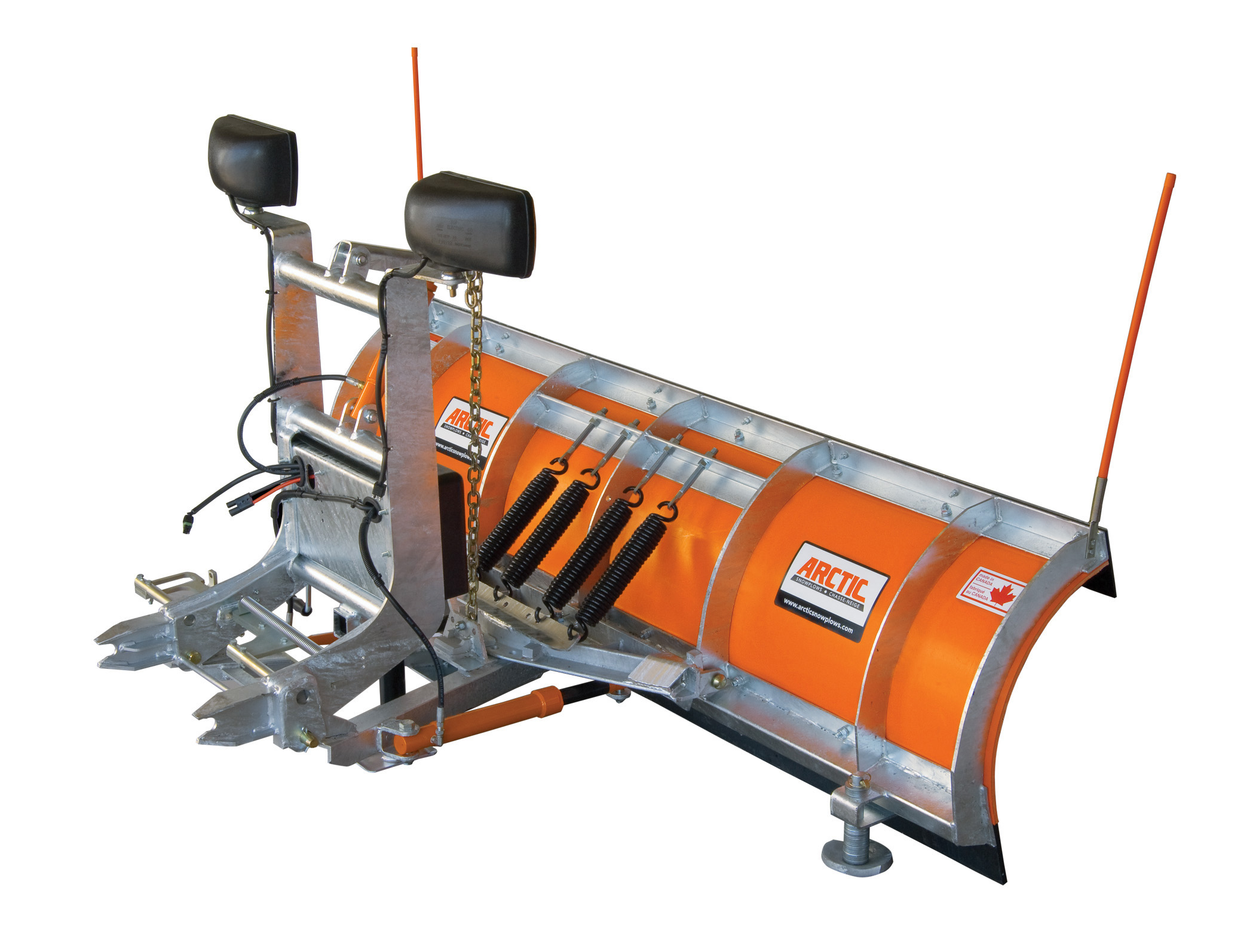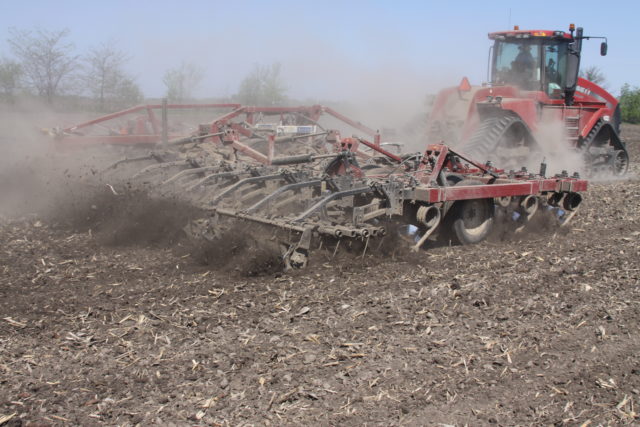-
Headquarters -
364018 McBeth Road Salford, Ontario, N0J 1W0
-
Year established -
1978
-
NAICS -
336212 - Truck trailer manufacturing
-
Major expansions -
2014
-
Employees -
170
-
Exports -
US, Chile, Turkey, Australia
-
Download -
Salford Group
Salford Group designs, manufactures, and assembles farm machinery for the agricultural marketplace. The firm offers primary tillage, secondary tillage, seeding, and fertilizing equipment and attachments.
Tucked away in a peaceful corner of Southwestern Ontario, a manufacturing giant is rising. In the eponymous Salford, Ontario, just southeast of Ingersoll, wheat fields sway gently in the breeze, cows meander across green pastures, and the population totals a prodigious 177. Meanwhile, Salford Group Inc. is quietly pursuing an agenda of multi-million dollar acquisitions and aggressive global growth.
Salford manufactures a full line of tillage and seeding equipment, as well as fertilizer applicators. Products include the Salford-BBI Fertilizer & Litter Spreaders, Salford-Valmar Granular Applicators, and Salford’s best-known, leading edge Residue Tillage Specialist line. The company sells its products through dealers and distributors in North America and internationally.
The founder, Jake Rozendaal, was an engineer from the Low Countries with a farming background. Starting in 1978 with a dealership and welding shop, Rozendaal developed a passion for making his own farm machinery. Some local farmers are still using his original machines, a testament to the equipment’s durability and efficiency.
Geof Gray, the current CEO, also grew up on a farm. A mechanical engineer and Ivey MBA by training, Gray’s heart always lay in manufacturing. When the opportunity arose in 2001, Gray was glad to assume the helm at Salford and allow Rozendaal to enjoy his well-earned retirement.
Good-natured and gentle, Gray has nevertheless led Salford through impressive growth in little over a decade. Salford now has over 450 dealers located in North America, South America, Europe, Asia and Australia. Revenues have soared from $4 million to $100 million since Gray took over, and employees, from 26 to 350.
At this site alone, Salford employs 170 workers. Tracing a triangle on a map behind his desk, London – Kitchener – Tillsonburg, Gray indicates the region bound by the three cities where most of his employees live. Different positions require different qualifications and skills: engineers and professionals need a university or college degree, customer service representatives require a farm background, and welders need to know how to weld, while manufacturing operations personnel are mostly trained in house; during the 1 year’s valuable hands-on training while doing meaningful work, operations personnel will develop tremendous experiences.
In addition, Salford recruits different co-op positions from Conestoga College, Fanshawe College, University of Waterloo, University of Guelph, and McMaster University throughout the year. Currently, 4 engineering students are in the rotation in the group. Gray tells us he also needs Russian speakers, of which there seems to be a dearth around Salford.
Russian language skills are a hot commodity as Salford pursues aggressive acquisitions. Because Salford exports high volumes to the American Midwest, the company’s first acquisition was in Iowa nearly a decade ago. Since then, they have acquired a company in Siberia – hence the Russian – as well as a plant in Georgia. Just six weeks before our interview, in fact, Salford also purchased a plant in Manitoba.
“It’s a win-win situation,” says Gray. Through the acquisition, small companies get access to Salford’s large distribution network, resources, engineers, manufacturing expertise and brand recognition, accelerating their products’ time to market. Salford gains new customers, product lines and markets.
The Salford, Ontario site ships due south to the United States, while the Iowa site actually ships north into Western Canada. It makes sense. Drawing two lines on the map of North America, Gray shows how shipping from Ontario to Western Canada is twice the length of the Iowa – Western Canada line. With its profusion of massive, previously government-owned farms, the former USSR also imports much of Salford’s machinery.
Unexpected boons from Russian farming notwithstanding, farm machinery manufacturing is not without its challenges. Pulling up a chart on his computer, Gray shows us how corn prices have dropped to half of what they used to be. When commodity prices fall, farmers have no choice but to cut costs – costs such as purchasing a new piece of Salford equipment.
However, Gray remains optimistic. As China and other developing countries acquire more wealth per capita, he explains, they will consume more meat. Increasing demand for meat means increasing demand for feed. Gray has faith in basic supply and demand – the invisible hand will bring corn prices back up.
Devaluation of loonie is both good and bad for manufacturers like Salford. On one hand, part of input costs is paid in U.S. dollars but revenues are largely in Canadian dollars. However, the natural hedge really helps mitigating currency exchange risk according to Gray. On the other hand, lower loonie helps Salford export. Canadian exporters and particularly manufacturers will be the major winners in current situation.
Despite all challenges, Salford is committed to staying in Canada. If one product line becomes less competitive, they’ll find another way to stay in business. “For SMEs like us,” Gray says, “This is home. My children grew up here; my church is here.”
“Come what may, we’re not going anywhere. We’ll find a way to survive and manufacture in Canada. This is our home.”
For more information about Salford Group, visit their website.
Published: July 26, 2016

Tri City Materials & Ready Mix
Tri City is a Kitchener based concrete and aggregate material manufacturer, operating through sister companies Tri City Materials and Tri City Ready Mix.

Arctic Snowplows
Arctic Snowplows builds high quality front- and rear-mounted snow removal equipment for a variety of trucks and skid steer related equipment.

J&S Manufacturing
J&S Manufacturing is a mining equipment manufacturer, with in-house design capabilities that allow the firm to manufacture mobile equipment as well as technical custom equipment. The company’s motto is “Built to Perform”.

Parmerit Inc. | Wolfe Heavy Equipment
When selecting a product or service, manufacturing customers look for companies that can deliver high quality and expertise. Parmerit Inc. (Parmerit) and Wolfe Heavy Equipment (Wolfe), two manufacturing companies located in Strathroy, Ontario, are companies that clearly understand the needs of their customers. Not only do they offer technical expertise, they also have an ability to manage projects and products tailored to their customers’ specific needs.

Timberland Equipment
Timberland Equipment is a global leader in the integrated design, manufacture and support of engineered winches, hoists, sheaves, derricks and tensioning equipment for the world’s most challenging infrastructure and capital equipment projects.







